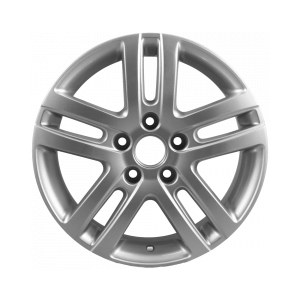removing crankshaft seal
Removing Crankshaft Seal A Comprehensive Guide
The crankshaft seal, often referred to as the rear main seal (for rear-mounted crankshafts) or front crankshaft seal (for front-mounted ones), plays a crucial role in preventing oil leaks in an automotive engine. Over time, due to various factors such as wear and tear, environmental conditions, and engine heat cycles, the seal may degrade and require replacement. This article provides a comprehensive guide on how to properly remove a crankshaft seal.
Tools and Materials Needed
Before starting the removal process, ensure you have the following tools and materials on hand
1. Socket set and wrenches 2. Screwdrivers (flathead and Phillips) 3. Pliers 4. Crankshaft seal puller or an improvised tool for extraction 5. Clean rags 6. Engine oil for lubrication 7. New crankshaft seal 8. Gasket maker or sealant (if necessary) 9. Safety goggles and gloves
Step-by-Step Process
1. Preparation
Begin by disconnecting the battery to avoid any electrical issues while working on the engine. Depending on your vehicle, you may need to remove various components like the intake manifold, timing cover, or the oil pan to access the crankshaft seal. Always refer to the vehicle’s service manual for specific instructions related to your make and model.
2. Locate the Crankshaft Seal
The crankshaft seal is generally located at the junction where the crankshaft exits the engine block. Depending on whether you are working on the front or rear of the engine, identify the position accordingly.
removing crankshaft seal

To remove the old crankshaft seal, start by gently prying it out using a flathead screwdriver or a seal puller. Be cautious to avoid damaging the crankshaft or the surrounding components. Insert the tool carefully and lever it against the engine block to extract the seal. If it proves difficult to remove, spraying a lubricant around the seal may help ease the process.
4. Clean the Surface
Once the old seal is removed, take a moment to clean the sealing surface thoroughly. Use a clean rag to wipe away any oil residue, dirt, or any remnants of the old seal. This step is crucial for ensuring a proper seal with the new crankshaft seal.
5. Install the New Seal
Before installing the new seal, lightly coat the outer edge with engine oil. This will aid in installation and improve the seal's longevity. Align the new seal with the crankshaft's shaft and gently tap it into place using a seal driver or a similar tool. Ensure it is seated evenly and flush with the engine block.
6. Reassemble Components
After the new seal is securely in place, it's time to reassemble any components you removed earlier. Follow the reverse order of disassembly and ensure all bolts and fasteners are torqued to the manufacturer’s specifications.
7. Final Checks
Reconnect the battery and start the engine. Monitor the area around the crankshaft seal for any signs of oil leakage. It’s also a good idea to check the oil level and make sure everything is functioning smoothly.
Conclusion
Removing and replacing a crankshaft seal may seem like a daunting task, but it can be achieved with careful preparation and attention to detail. By following the steps outlined above, you can effectively handle this maintenance task, ensuring your engine operates efficiently and without oil leaks. Always consult your vehicle's service manual for specific instructions and recommendations, and don't hesitate to seek professional help if you're unsure about the process. Proper maintenance of engine seals not only prolongs the life of your engine but also enhances its overall performance.
-
The Ultimate Guide to Boat Propeller Bearings and Trailer Wheel Bearings
News Jul.31,2025
-
The Essential Guide to Marine Bearings and Boat Trailer Wheel Bearings
News Jul.31,2025
-
The Complete Guide to Heavy Duty Seals: Protecting Doors and Spaces Efficiently
News Jul.31,2025
-
Essential Guide to Marine Shaft Bearings and Boat Trailer Axle Bearings
News Jul.31,2025
-
Comprehensive Guide to Marine and Trailer Bearings for Safe Boating and Transport
News Jul.31,2025
-
Comprehensive Guide to Automotive Oil Seals: Protecting Your Engine and Shafts
News Jul.31,2025
-
Understanding Automotive Oil Seals: Essential Components for Engine and Shaft Protection
News Jul.30,2025
Products categories















